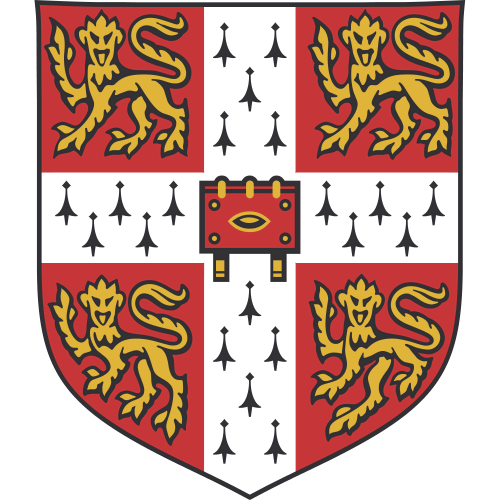International Journal of Systematic and Evolutionary Microbiology, volume 71, issue 7
‘Candidatus Xiphinematincola pachtaicus' gen. nov., sp. nov., an endosymbiotic bacterium associated with nematode species of the genus Xiphinema (Nematoda, Longidoridae)
Subbotin Sergei A.
2, 3
,
Арискина Е. В.
4
,
Suzina Natalia E.
4
,
Mota M Uchoa
5
,
Bert Wim
6
,
Claeys Myriam
6
,
Yushin Vladimir V.
7
,
Castillo Pablo
1
,
Ariskina Elena V.
4
1
Institute for Sustainable Agriculture (IAS), Spanish National Research Council (CSIC), Avenida Menéndez Pidal s/n, 14004 Córdoba, Campus de Excelencia Internacional Agroalimentario, ceiA3, Spain
|
3
California Department of Food and Agriculture, Plant Pest Diagnostic Center, Sacramento, CA 95832, USA
|
5
NemaLab, MED – Mediterranean Institute for Agriculture, Environment and Development, Institute for Advanced Studies and Research, Universidade de Évora, Pólo da Mitra, Ap. 94, 7006-554 Évora, Portugal
|
Publication type: Journal Article
Publication date: 2021-07-21
Quartile SCImago
Q1
Quartile WOS
Q3
Impact factor: 2.8
ISSN: 14665026, 14665034
PubMed ID:
34287117
General Medicine
Microbiology
Ecology, Evolution, Behavior and Systematics
Abstract
An intracellular bacterium, strain IAST, was observed to infect several species of the plant-parasitic nematode genus Xiphinema (Xiphinema astaregiense, Xiphinema incertum, Xiphinema madeirense, Xiphinema pachtaicum, Xiphinema parapachydermum and Xiphinema vallense). The bacterium could not be recovered on axenic medium. The 16S rRNA gene sequence of IAST was found to be new, being related to the family Burkholderiaceae, class Betaproteobacteria. Fungal endosymbionts Mycoavidus cysteinexigens B1-EBT (92.9 % sequence identity) and ‘Candidatus Glomeribacter gigasporarum’ BEG34 (89.8 % identity) are the closest taxa and form a separate phylogenetic clade inside Burkholderiaceae. Other genes (atpD, lepA and recA) also separated this species from its closest relatives using a multilocus sequence analysis approach. These genes were obtained using a partial genome of this bacterium. The localization of the bacterium (via light and fluorescence in situ hybridization microscopy) is in the X. pachtaicum females clustered around the developing oocytes, primarily found embedded inside the epithelial wall cells of the ovaries, from where they are dispersed in the intestine. Transmission electron microscopy (TEM) observations supported the presence of bacteria inside the nematode body, where they occupy ovaries and occur inside the intestinal epithelium. Ultrastructural analysis of the bacterium showed cells that appear as mostly irregular, slightly curved rods with rounded ends, 0.8–1.2 µm wide and 2.5–6.0 µm long, possessing a typical Gram-negative cell wall. The peptidoglycan layer is, however, evident only occasionally and not detectable by TEM in most cells. Another irregularly occurring shell surrounding the endosymbiont cells or the cell clusters was also revealed, probably originating from the host cell membrane. Flagella or spore-like cells do not occur and the nucleoid is diffusely distributed throughout the cell. This endosymbiont is transmitted vertically through nematode generations. These results support the proposal of IAST as a new species, although its obligate intracellular and obligate endosymbiont nature prevented isolation of a definitive type strain. Strain IAST is therefore proposed as representing ‘Candidatus Xiphinematincola pachtaicus’ gen. nov., sp. nov.
Citations by journals
|
1
|
|
|
International Journal of Systematic and Evolutionary Microbiology

|

International Journal of Systematic and Evolutionary Microbiology
1 publication, 33.33%
|
|
Frontiers in Microbiology

|

Frontiers in Microbiology
1 publication, 33.33%
|
|
Journal of Helminthology

|

Journal of Helminthology
1 publication, 33.33%
|
|
1
|
Citations by publishers
|
1
|
|
|
Microbiology Society

|

Microbiology Society
1 publication, 33.33%
|
|
Frontiers Media S.A.

|

Frontiers Media S.A.
1 publication, 33.33%
|
|
Cambridge University Press

|

Cambridge University Press
1 publication, 33.33%
|
|
1
|
- We do not take into account publications that without a DOI.
- Statistics recalculated only for publications connected to researchers, organizations and labs registered on the platform.
- Statistics recalculated weekly.
{"yearsCitations":{"type":"bar","data":{"show":true,"labels":[2022],"ids":[0],"codes":[0],"imageUrls":[""],"datasets":[{"label":"Citations number","data":[3],"backgroundColor":["#3B82F6"],"percentage":["100"],"barThickness":null}]},"options":{"indexAxis":"x","maintainAspectRatio":true,"scales":{"y":{"ticks":{"precision":0,"autoSkip":false,"font":{"family":"Montserrat"},"color":"#000000"}},"x":{"ticks":{"stepSize":1,"precision":0,"font":{"family":"Montserrat"},"color":"#000000"}}},"plugins":{"legend":{"position":"top","labels":{"font":{"family":"Montserrat"},"color":"#000000"}},"title":{"display":true,"text":"Citations per year","font":{"size":24,"family":"Montserrat","weight":600},"color":"#000000"}}}},"journals":{"type":"bar","data":{"show":true,"labels":["International Journal of Systematic and Evolutionary Microbiology","Frontiers in Microbiology","Journal of Helminthology"],"ids":[2123,24403,10453],"codes":[0,0,0],"imageUrls":["\/storage\/images\/resized\/RlMKyKHh4Q2iTSKF38VHwIFW4f6Ke5ChRSXbQHkq_medium.webp","\/storage\/images\/resized\/4QWA67eqfcfyOiA8Wk7YnqroHFqQbTsmDJUYTCTg_medium.webp","\/storage\/images\/resized\/cF81zWlLdkmYekymGuDcSdvgBGNKaIDoMoeJtHS1_medium.webp"],"datasets":[{"label":"","data":[1,1,1],"backgroundColor":["#3B82F6","#3B82F6","#3B82F6"],"percentage":[33.33,33.33,33.33],"barThickness":13}]},"options":{"indexAxis":"y","maintainAspectRatio":false,"scales":{"y":{"ticks":{"precision":0,"autoSkip":false,"font":{"family":"Montserrat"},"color":"#000000"}},"x":{"ticks":{"stepSize":null,"precision":0,"font":{"family":"Montserrat"},"color":"#000000"}}},"plugins":{"legend":{"position":"top","labels":{"font":{"family":"Montserrat"},"color":"#000000"}},"title":{"display":true,"text":"Journals","font":{"size":24,"family":"Montserrat","weight":600},"color":"#000000"}}}},"publishers":{"type":"bar","data":{"show":true,"labels":["Microbiology Society","Frontiers Media S.A.","Cambridge University Press"],"ids":[827,208,1],"codes":[0,0,0],"imageUrls":["\/storage\/images\/resized\/RlMKyKHh4Q2iTSKF38VHwIFW4f6Ke5ChRSXbQHkq_medium.webp","\/storage\/images\/resized\/4QWA67eqfcfyOiA8Wk7YnqroHFqQbTsmDJUYTCTg_medium.webp","\/storage\/images\/resized\/cF81zWlLdkmYekymGuDcSdvgBGNKaIDoMoeJtHS1_medium.webp"],"datasets":[{"label":"","data":[1,1,1],"backgroundColor":["#3B82F6","#3B82F6","#3B82F6"],"percentage":[33.33,33.33,33.33],"barThickness":13}]},"options":{"indexAxis":"y","maintainAspectRatio":false,"scales":{"y":{"ticks":{"precision":0,"autoSkip":false,"font":{"family":"Montserrat"},"color":"#000000"}},"x":{"ticks":{"stepSize":null,"precision":0,"font":{"family":"Montserrat"},"color":"#000000"}}},"plugins":{"legend":{"position":"top","labels":{"font":{"family":"Montserrat"},"color":"#000000"}},"title":{"display":true,"text":"Publishers","font":{"size":24,"family":"Montserrat","weight":600},"color":"#000000"}}}}}
Metrics
Cite this
GOST |
RIS |
BibTex
Cite this
GOST
Copy
Palomares-Rius J. E. et al. ‘Candidatus Xiphinematincola pachtaicus' gen. nov., sp. nov., an endosymbiotic bacterium associated with nematode species of the genus Xiphinema (Nematoda, Longidoridae) // International Journal of Systematic and Evolutionary Microbiology. 2021. Vol. 71. No. 7.
GOST all authors (up to 50)
Copy
Palomares-Rius J. E., Gutiérrez-Gutiérrez C., Mota M. U., Bert W., Claeys M., Yushin V. V., Suzina N. E., Арискина Е. В., Evtushenko L. I., Subbotin S. A., Castillo P., Ariskina E. V. ‘Candidatus Xiphinematincola pachtaicus' gen. nov., sp. nov., an endosymbiotic bacterium associated with nematode species of the genus Xiphinema (Nematoda, Longidoridae) // International Journal of Systematic and Evolutionary Microbiology. 2021. Vol. 71. No. 7.
Cite this
RIS
Copy
TY - JOUR
DO - 10.1099/ijsem.0.004888
UR - https://doi.org/10.1099%2Fijsem.0.004888
TI - ‘Candidatus Xiphinematincola pachtaicus' gen. nov., sp. nov., an endosymbiotic bacterium associated with nematode species of the genus Xiphinema (Nematoda, Longidoridae)
T2 - International Journal of Systematic and Evolutionary Microbiology
AU - Palomares-Rius, Juan Emilio
AU - Gutiérrez-Gutiérrez, Carlos
AU - Mota, M Uchoa
AU - Bert, Wim
AU - Claeys, Myriam
AU - Yushin, Vladimir V.
AU - Suzina, Natalia E.
AU - Арискина, Е. В.
AU - Evtushenko, Lyudmila I.
AU - Subbotin, Sergei A.
AU - Castillo, Pablo
AU - Ariskina, Elena V.
PY - 2021
DA - 2021/07/21 00:00:00
PB - Microbiology Society
IS - 7
VL - 71
PMID - 34287117
SN - 1466-5026
SN - 1466-5034
ER -
Cite this
BibTex
Copy
@article{2021_Palomares-Rius,
author = {Juan Emilio Palomares-Rius and Carlos Gutiérrez-Gutiérrez and M Uchoa Mota and Wim Bert and Myriam Claeys and Vladimir V. Yushin and Natalia E. Suzina and Е. В. Арискина and Lyudmila I. Evtushenko and Sergei A. Subbotin and Pablo Castillo and Elena V. Ariskina},
title = {‘Candidatus Xiphinematincola pachtaicus' gen. nov., sp. nov., an endosymbiotic bacterium associated with nematode species of the genus Xiphinema (Nematoda, Longidoridae)},
journal = {International Journal of Systematic and Evolutionary Microbiology},
year = {2021},
volume = {71},
publisher = {Microbiology Society},
month = {jul},
url = {https://doi.org/10.1099%2Fijsem.0.004888},
number = {7},
doi = {10.1099/ijsem.0.004888}
}


